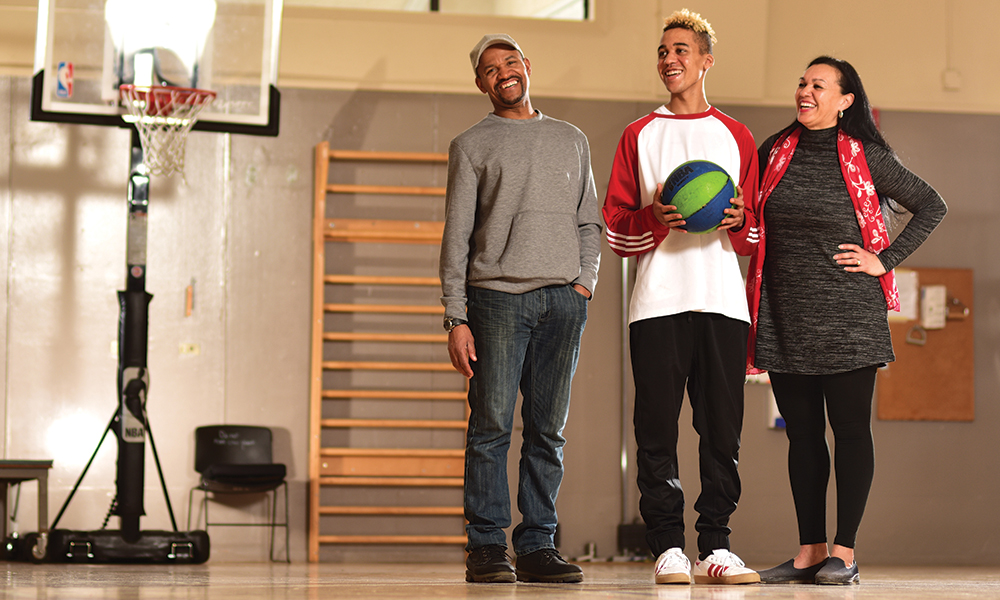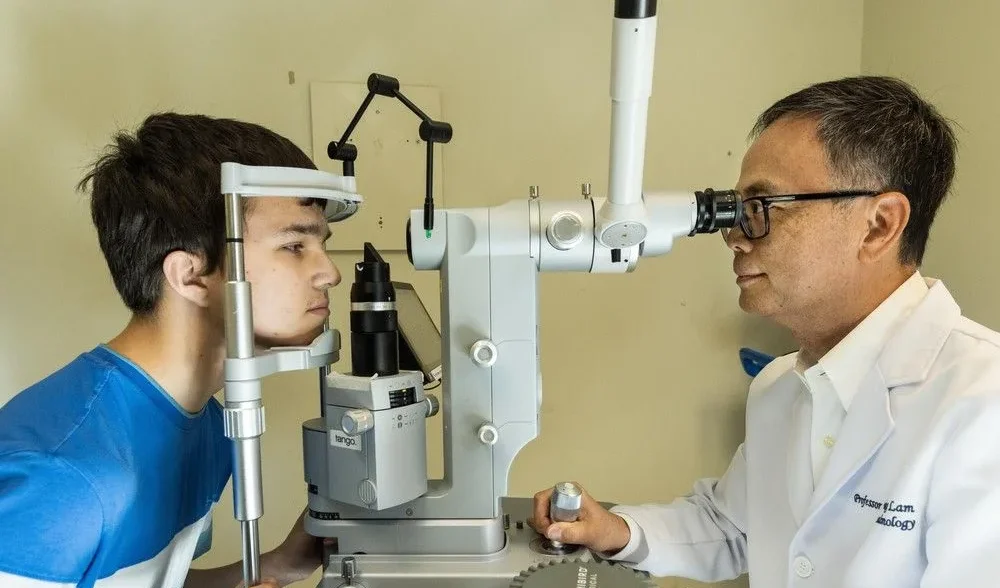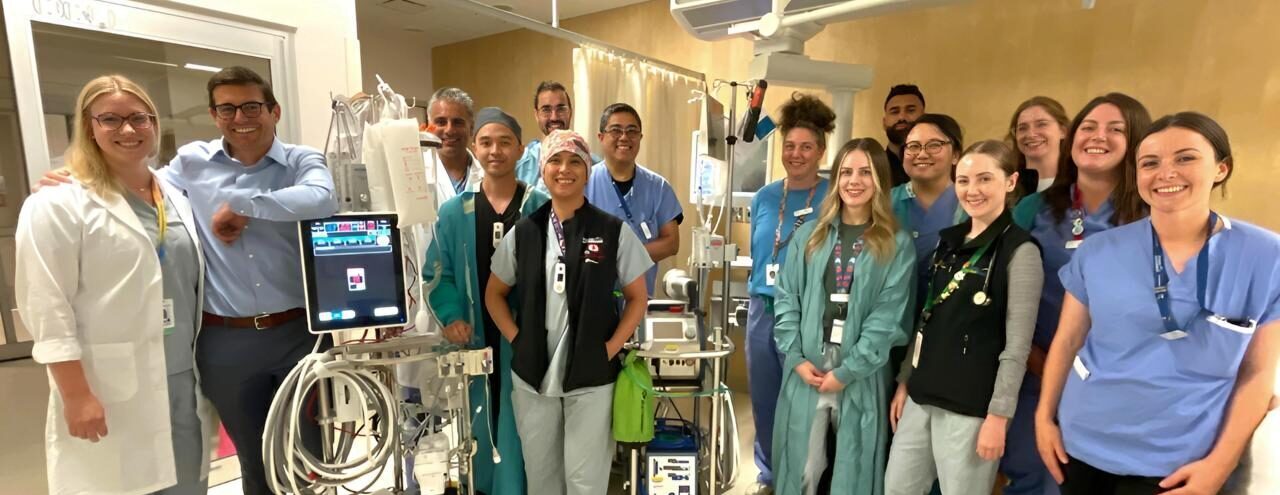Ontario snowboarder Kody Williams is lucky to be alive.
When a rare snowfall hit the city of Vancouver last December, Kody and his friends decided to ride some local handrails, doing tricks. What started as a routine jump for the experienced snowboarder, ended with him on the pavement below, unconscious with a severe injury to the right side of his head.
He was rushed to Vancouver General Hospital (VGH) for surgery and was unconscious until January 2. In early February, he was moved to GF Strong Rehab Centre to regain the motor skills he lost from the injury.
Amazingly, three months later, the 23-year-old is walking and even playing basketball with his dad.
“I’m feeling good,” he says. “I’m feeling the best I have in a long time—I’m getting back to basics and living a normal life.”
“Last week, I did my first run on the treadmill—it felt good to sweat,” he continues with a smile. “And I was shooting some hoops with my dad at GF Strong.”
Dr. Myp Sekhon, the physician who treated Kody with invasive neuromonitoring—intracranial pressure and brain oxygen monitoring—says the young man was in very bad shape when he came in. Dr. Sekhon’s colleague, Dr. Peter Gooderham, a neurosurgeon, operated to repair Kody’s skull.
“Honestly, he was a few hours away from being brain dead—it was pretty serious,” says Dr. Sekhon. “He was one of the most difficult cases I’ve ever had to manage in my career. But it’s impressive how fast he has recovered…the trajectory of how he’s gotten better is pretty remarkable.”
Kody’s mother, Jocelyn, is very grateful for the care her son received at VGH and GF Strong.
“Happy cannot even begin to describe how I feel about his recovery and the people who took care of him at VGH, GF Strong, as well as the whole snowboard community and the church community,” she says, looking at Kody. “I don’t know how to say thank you enough. We’re beyond grateful for the outcome. I keep calling it the ‘handoff.’ From emergency medical services who took the baton to the emergency room at VGH, who then took the baton to GF Strong—everyone took the baton and ran with it for my son.”
It was a tough experience, but Kody says he learned one big lesson from all of it.
“Once I start boarding again, I’m definitely going to wear a helmet,” he says. “And because of my accident, most of my friends are too, after they saw what happened to me.”
Traumatic brain injuries
- Annually, an estimated 10 million people are affected by a traumatic brain injury globally.
- In Canada, the annual cost of brain injuries has been estimated at $3 billion.
- Brain injuries are a leading cause of death. In Canada they account for about 30% of all injury deaths.
- According to the World Health Organization, traumatic brain injury will surpass many diseases as the major cause of death and disability by the year 2020.
- Approximately 1.5 million people in Canada are living with a brain injury.
[:zh]安大略省的滑雪手科迪•威廉姆斯(Kody Williams) 非常庆幸仍能活着。
去年十二月份温哥华市降了一场罕见的大雪,科迪和他的朋友决定在当地铁栏上玩一些花式滑板。对于经验丰富滑雪板手来说的一个例行跳跃动作,结果让科迪倒在路面上,头部右侧严重受伤,昏迷不醒。
科迪被赶送至温哥华综合医院 (VGH) 进行手术,但一直昏迷至1月2日。2月初,他被转送到思强康复中心,学习因受伤而失去的动作技能。
令人惊讶的是,三个月后,23岁的科迪已能够走路,甚至和爸爸打篮球。
“我现在感觉不错,”他说。“很久以来都没有这么好的感觉了 – 我正回复原本的我,过着正常的生活。”
“上周,我第一次上跑步机跑步,出了一身汗水的感觉很好,”他微笑着说。“我也在思强康复中心和爸爸射篮。”
曾为科迪作微创神经监察 (颅内压和脑氧监测) 的萨康医生(Dr. Myp Sekhon)说,这位年轻人入院时情况非常恶劣。萨康医生的同事,神经外科医生彼得•古得勒姆(Dr. Peter Gooderham)为科迪的头骨进行修复手术。
“说实话,他离脑死亡只是几个小时之距 – 情况极为严重,” 萨康医生说。“科迪是我行医以来遇到最棘手的个案之一; 但他康复的过程及复元的速度实在令人惊叹。
科迪的母亲乔斯林(Jocelyn)非常感恩她儿子在温哥华综合医院和思强康复中心所得到的护理。
“只用快乐二字不能形容我对科迪康复的感觉,衷心感谢温哥华综合医院、思强康复中心,以及整个滑雪板和教会社区照顾他的人,” 她看着儿子说。“我不知道怎么道谢大家才算足够。我们对结果不胜感激,称整个过程为“接力赛”。从紧急医疗服务交棒到VGH的急症室,然后再将棒交到思强康复中心,每个人都接力拿着棒和我的儿子一起跑。
这是一个惨痛的经历,但是科迪说他从中上了人生极重要的一课。
“当我可以再次玩滑雪板时,我一定会戴上头盔,”他说。“经历这事故,朋友们看到我的遭遇,现在大多数已做好安全措施。”
帮助像科迪这样的病人踏上康复的征途。 请浏览网頁vghfoundation.ca/community
Share this:



